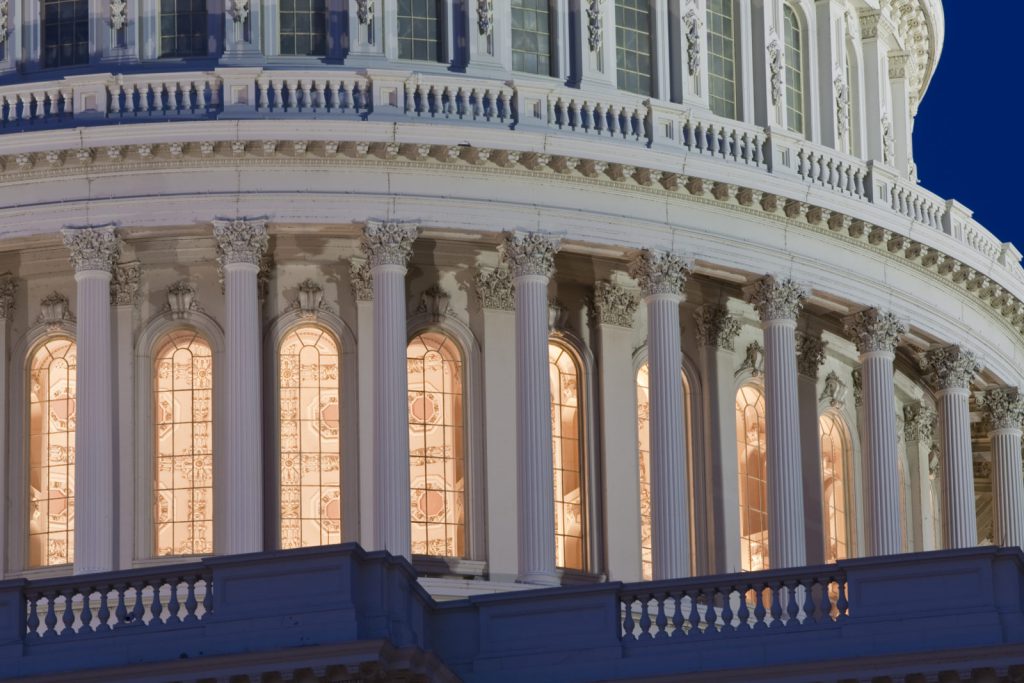
Published January 4, 2019
We are now about two weeks into a peculiar sort of government shutdown. It is peculiar in part because it is a partial shutdown: Some of the government services that usually get the most attention in a shutdown—like veterans’ benefits and the National Institutes of Health—are actually funded for the year through spending bills passed in the last congress. There are certainly stories to tell about those agencies that are largely shut down, but none are all that compelling so far.
And that relates to the second peculiarity of this shutdown: Neither side really has much of an incentive to end it, or much leverage over the other side. There is of course a certain inherent pressure to end a government shutdown—at the very least out of some Washington muscle memory that leaves people uneasy, and in part maybe out of a sense that a shutdown signals incompetence and dysfunction. That may turn out to be enough to force action, and there are some easily imaginable deals to be had, especially by reviving the use of appropriations riders and directing them to immigration policy. (I suggested a few of those around here in November.)
But strong as that inherent pressure may be, it doesn’t easily amount to an argument that would persuade either side to give ground on the core point of contention. That’s really the question you’d have to answer to see the way out of the shutdown: What would move President Trump to give ground on the wall at this point? Or what would move the Democrats to fund the wall? One side or the other would have to either gain something significant enough to overcome their insistence on the wall question or lose something significant enough to force a concession. That could happen in roughly three ways, or by some combination of the three: if one side had something to offer that the other wanted, if one side had some way of inflicting meaningful pain on the other, or if external pressures created by the shutdown itself became intolerable.
So what could one side offer the other? President Trump could offer the Democrats some significant concessions on other immigration-related issues to get his wall funding. There has been more talk on the Right about a wall-for-DACA deal in the last day or so, for instance, even though President Trump has rejected precisely such a deal in the past. But it’s not actually clear that Nancy Pelosi has the leeway from her activists to permit wall funding even for a meaningful concession. And it’s not clear the president has that leeway either. Pelosi, meanwhile, doesn’t have much to offer Trump in place of wall funding. The administration doesn’t really have a legislative agenda and the president doesn’t really have the kinds of durable priorities that could make negotiation possible. It is also clear, after Trump’s embarrassing about-face in late December that led to the shutdown, that the president is very easily manipulated by pressure from some of his own supporters. Trump is a weak-willed narcissist, and he is not going to be able to do much that isn’t popular on the cable-news shows he watches.
Could one side impose real pain on the other? Here we confront the strange fact that neither party is all that confident that it understands public opinion at this point. Is the wall popular or not? Would a public-pressure campaign that accuses the Democrats of being soft on border security create political problems for the Democrats? That kind of campaign is about all the administration can do, and it probably will do it (though the total lack of any attempt at public persuasion of any kind so far in this showdown has been striking). But it’s not easy to say if it will really hurt. The Democrats might have a few more arrows in their quiver because they control the House, and so can force uncomfortable votes on House Republicans. Put a bill on the floor that gives Trump most of the wall funding he wants but ends the so-called Mexico City policy that prohibits funding abortion in foreign aid, for instance. There is an endless number of such games they could play, but again it’s not clear if Pelosi has the running room to do that, or if Republicans would really find it painful to just vote ‘no’ on all such moves.
And will the shutdown itself start to feel painful? For the time being, the only obvious pain is that being experienced by federal employees. They have now missed a paycheck, and if they miss another we may well start to see stories about missed mortgage payments and other serious problems. But what is the political valence of stories like that? How can they be translated into pressure sufficient to get Democrats to fund the wall or Republicans to give it up? It’s hard to see it happening. To really hurt, the shutdown would need to have much broader effects.
I can think of two ways that might happen given the limited character of this particular shutdown. The first involves the federal judiciary. The third branch has not generally been a major factor in previous shutdowns, because the administrators of the federal courts are able to draw on court fees and a few other non-appropriated sources of funding to get by for a while, and shutdowns haven’t usually lasted that long. But user-fees can only take them so far, and at this point it looks like they can last about one more week. After that, the courts will need to decide which of their operations meet the statutory limit on “emergency spending” that can continue without new appropriations under the Anti-Deficiency Act. The law is vague, but it is not endlessly flexible, and you could easily start to see real lapses in the operation of the federal courts within a week or two that would put added pressure on both parties to end the shutdown.
The second involves income-tax refunds. Those almost certainly cannot be paid during a shutdown. And that’s a problem that would start affecting people well before April 15. Lots of people file early, and count on their refunds early. About fourteen million households had filed by February 1st last year, according to the IRS. At this point, it’s not clear when the IRS will even start allowing people to file, and it’s pretty clear that no refunds can be sent while the government is shut down.
Both of these, and others like them that I’m not readily imagining, are forms of pressure that might start to be felt if the shutdown goes on for weeks. That simply may not happen of course. It might end very soon, with another continuing resolution pushing the fight further out into 2019 or with a deal that splits the parties’ differences somehow. But to a greater degree than has been the case in other shutdowns in this century, both sides entered this one unexpectedly and without a plan, and neither really has much leverage over the other.
— Yuval Levin is the editor of National Affairs and a fellow at the Ethics and Public Policy Center.





